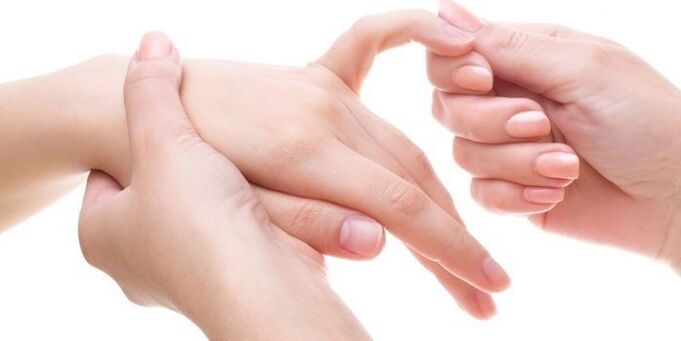
Articular pain in the hand not only interferes with normal life, reduces physical activity, leads to impaired performance, but also worsens the emotional state due to the painful discomfort that always arises.
That is why, when a person experiences pain in the finger joint, the first thing that interests him is the cause of this phenomenon and possible treatment.
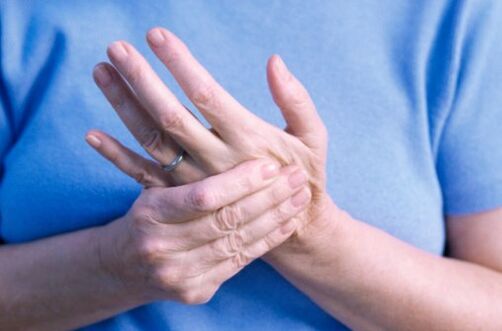
Cause of pain
Pain in the hands can be caused by various diseases, many of which have relatively similar symptoms.Most diseases are chronic, and the prerequisites for their development are often not noticed.Let's find out why the joints on the fingers of one or both hands hurt.
Rheumatoid arthritis
Rheumatoid arthritis is an ever-progressive connective tissue disease that affects the joints (mainly peripheral). Due to chronic inflammation of the synovial membrane, cartilage destruction occurs. Periarticular tissue is affected. Pathology develops as a result of immune autoaggression.The clinical picture is characterized by:
- destruction of cartilage tissue;
- osteoporosis;
- pain, articular deformities (hand in the first place), subluxations, contractures;
- deterioration of the condition of blood vessels, damage to lymph nodes;
- changes in the skin, nails, increased pigmentation;
- the formation of certain rheumatoid nodules;
- heart disorders (rheumatoid carditis);
- dystrophic changes in muscles;
- various kidney pathologies (most often amyloidosis), liver;
- functional disorders of the gastrointestinal tract;
- neurological disorders, rheumatoid neuropathy.
This disease can be caused by infection, hypothermia, trauma, physical or nervous tension.There is a genetic predisposition to this disease.Women get arthritis about 3 times more often.
The earliest and most important symptom is morning stiffness throughout the body, especially felt in the joints of the hands, which disappears after physical activity. In the early stages, there may be a temporary deterioration in the general condition, when the joints of the fingers and toes periodically hurt, the appetite decreases, the heart rate increases, sweating, and a low temperature appears.
Then, the pain - especially in the small joints of the hands and feet - gets stronger, especially in the morning, after sleeping and when making movements.The duration of morning stiffness is prolonged, which becomes painful.Joint mobility is increasingly limited. Pronounced inflammatory edema, hyperemia appears, skin temperature rises above the site of inflammation, fever begins.
Rheumatoid arthritis is characterized by alternating periods of exacerbation and remission, sometimes long - for months and even years. With each aggravation, the process involves new joints.
Osteochondrosis
Spinal osteochondrosis leads to lumbago in the back, neck, neurovascular disorders, herniated disc formation, impaired blood flow in the vertebral arteries, pinched nerve roots and other neurological symptoms. Often, this disease is accompanied by numbness in the fingers, but the pain may be mistaken for joint pain.
Osteochondropathy. Kienböck's disease
Pain in the fingers can be caused by osteochondropathy - necrosis of bone tissue caused by increased mechanical stress, especially in childhood and adolescence. In adults, this disease is diagnosed less often.Pathological development is provoked by injury, excessive functional load, infection, rapid growth in children, constitutional characteristics, and sometimes vitamin imbalance.
One such disease is Kienböck's disease, which affects the wrist joint. This type of osteochondropathy is mostly characteristic of men aged 18 to 30 years with chronic microtraumatization or overstrain of the hands (locksmiths, turners, carpenters, carpenters). The symptom complex includes:
- constant pain covering the fingers, wrist area;
- persistent swelling;
- increased pain when pressing on the wrist joint;
- bone destruction, intercarpal joint subluxation in the final stages of the disease.
The process, as a rule, affects only one party.
Reactive arthritis
A recent infectious disease (1-1. 5 months ago) and the development of joint inflammation after it can explain why the fingers on the hand hurt, especially when bent. Reactive arthritis may be caused by an immune response to microbial antigens located outside the joint, which causes the development of immunocomplex synovitis in the synovial membrane.
The symptomatology of the disease is stated:
- pain in affected joints, tendons;
- deterioration of skin condition, changes in nails;
- genitourinary, cardiovascular, lymphatic system diseases.
The clinic of reactive arthritis is diverse and depends on the causative agent of the infection: streptococcus, salmonella, meningococcus, shigella and many others.
Gout
Gout belongs to the group of metabolic arthritis - diseases of the musculoskeletal system caused by metabolic disorders, in this case - uric acid. This disease affects mainly men over 40 years old, but it is possible to develop gout in young people aged 20-30 years, in postmenopausal women.
Violations of purine metabolism can be caused by:
- increased synthesis due to genetically inherited characteristics;
- kidney failure;
- some blood diseases;
- taking medications;
- consumption of foods high in purines and fats (meat, fish), alcohol;
- infection;
- a combination of various factors that affect uric acid metabolism.
This disease is accompanied by the development of hyperuricemia - an excess of uric acid in the blood serum, resulting in the deposition of urate in the joint tissue.
Gout is characterized by an attack-like course with the involvement of an increasing number of joints and tendons in the process, the gradual appearance of permanent visible deformities, stiffness, osteoarthritis, and the formation of tophi (gouty nodes).
The severity of the symptoms of inflammation is indicated:
- sharp pain, usually at night;
- joint swelling, hyperemia;
- weakness, fever, chills;
- increased anxiety;
- stool disorder.
The localization of gouty arthritis in the small joints of the hand is atypical. However, gout may be a very likely explanation for why knuckles hurt.
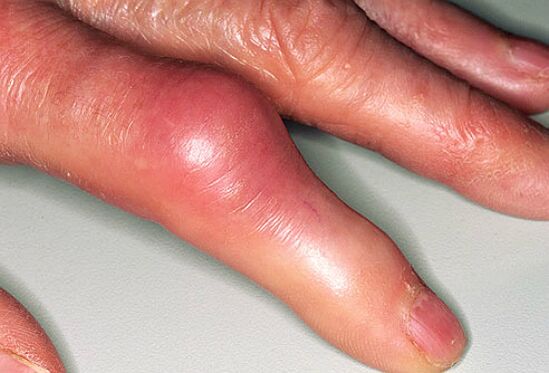
Psoriatic arthritis
Patients with psoriasis often suffer from chronic inflammation - psoriatic arthritis, the classic form of which is considered damage to the joints of the hands and feet. The disease usually develops imperceptibly, with a gradual increase in symptoms, although an acute onset is sometimes possible.You can suspect arthritis with the following signs:
- finger and foot joints ache in the morning or throughout the day;
- there is painful swelling;
- the skin over the joint becomes cyanotic;
- trophic changes occur.
The defeat of the joint in the future becomes the cause of finger deformation, contracture, leads to the development of chronic synovitis, arthrosis.
Extra-articular rheumatism
Extra-articular rheumatism in the form of soft periarticular tissue disease often leads to pain in the fingers. The main factors of development are injuries, prolonged movement stereotypes, hypothermia, humidity, infection, and often there is a lack of nutrition and blood supply.Pain can occur due to:
- tendonitis - degenerative lesions of tendons;
- tendovaginitis (otherwise - tenosynovitis, ligamentitis) - inflammation of the median part of the tendon, inner layer of the vagina, extra-articular ligament;
- bursitis - an inflammatory process in the serous bag, usually caused by tendovaginitis.
In the hands, the tendons of the wrist and hand are most often affected, which are associated with almost constant functional stress.Most often, the reason that the fingers on the hands hurt on the entire surface or in the joints is a syndrome caused by:
- de Quervain's disease - tendovaginitis of the muscle tendon responsible for abduction and extension of the thumb;
- carpal tunnel syndrome - tendovaginitis of the finger flexors, often combined with Guyon's canal syndrome - compression of the palmar ligament of the ulnar nerve and ulnar artery;
- wrist tendon ligamentitis;
- Knott's disease ("jerk" of the finger), which affects the superficial flexor tendon of the finger and its sheath;
- bursitis (tendobursitis).
Pain usually arises or increases with movement, disturbing at night.There may be swelling, stiffness, and sensory disturbances.
Osteoarthritis
Degenerative-dystrophic process in articular cartilage with the formation of osteophytes - osteoporosis - is the most common variant of articular pathology, the frequency of which increases with age. It occurs due to two reasons: increased mechanical impact on the joint and deterioration of the cartilage.
Damage to the joints of the hands leads to the fact that the fingers or the entire palm hurts, at first only when bending, significant physical effort, and then even at rest, in the morning, sometimes at night.In addition, this disease is accompanied by:
- stiffness, contracture;
- articular deformity;
- sometimes hot swelling.
Osteoarthritis is characterized by a long-term course with a gradual increase in symptoms, usually without a sharp exacerbation. The main types of diseases that affect the hands are osteoarthritis of the interphalangeal joints and metacarpal joints.
%20and%20affected%20by%20osteoarthritis%20(right).jpg)
Systemic lupus erythematosus
It is an autoimmune polysyndromic disease with a chronic course, general vascular damage and changes in connective tissue. It mainly affects teenage girls and young women in their 20s and 30s.
The development of this disease can be imperceptible and acute, suddenly. The gradual onset occurs against the background of weakness, weight loss, subfebrile temperature, signs of arthritis (synovitis), minor skin manifestations. Acute - characterized by severe pain in the joints, fever and a bright rash on the skin.Also, this disease may be accompanied by:
- hair loss, nail changes;
- sensitivity disorders;
- stomatitis;
- damage to the cardiovascular system, often pericarditis;
- sometimes muscle atrophy (especially hands), deformation of the joints of fingers, wrists, ankles;
- lung pathology (pneumonia, candidiasis, tuberculosis, etc. );
- kidney damage (lupus glomerulonephritis);
- vegetative and emotional disorders;
- decreased intelligence, hallucinations, seizures.
Arthritis is the most common symptom of systemic lupus erythematosus.
That is why the appearance of skin erythema and the discomfort caused by the fact that the joints of the fingers hurt (especially if the causes of pain lie in the force created when squeezing the hand) are the basis for examination for this disease.
Diagnostics
Since pain in the joints of the hands can be caused by various disorders, it is necessary to determine the exact reason why the fingers are stiff, swollen and / or painful.Diagnosis is made using the following studies:
- radiography;
- scintigraphy;
- ultrasound examination;
- magnetic resonance or computed tomography;
- immunological tests;
- laboratory analysis of blood, urine.
If necessary, for an accurate diagnosis of the cause of joint pain in the fingers, tissue biopsy is performed, analysis of synovial fluid.
Treatment Methods
It is impossible to independently determine what to do if swelling or a painful joint on the finger hurts. Treatment is prescribed exclusively by a doctor after diagnosis and examination.
Medical treatment
If the fingers on the hand (during flexion, abduction movements, rest) are too painful, short-term analgesic intake is allowed before examination by a specialist.
Joints should not be heated, anti-inflammatory and antibacterial agents should not be taken uncontrollably.
You can use an ointment that relieves acute pain in the finger joints.
Further therapy depends on the disease and is usually complex.Treatment is aimed at:
- to relieve bitterness with medicines, relieve pain with painkillers, anti-inflammatory ointments, gels;
- on the normalization of metabolism, immune processes;
- to restore blood supply, improve joint nutrition, improve its function.
Therapy of the syndrome that has developed against the background of the underlying pathology is carried out. Blood purification procedures are used: plasmapheresis, hemosorption. In severe cases, use surgical treatment methods.
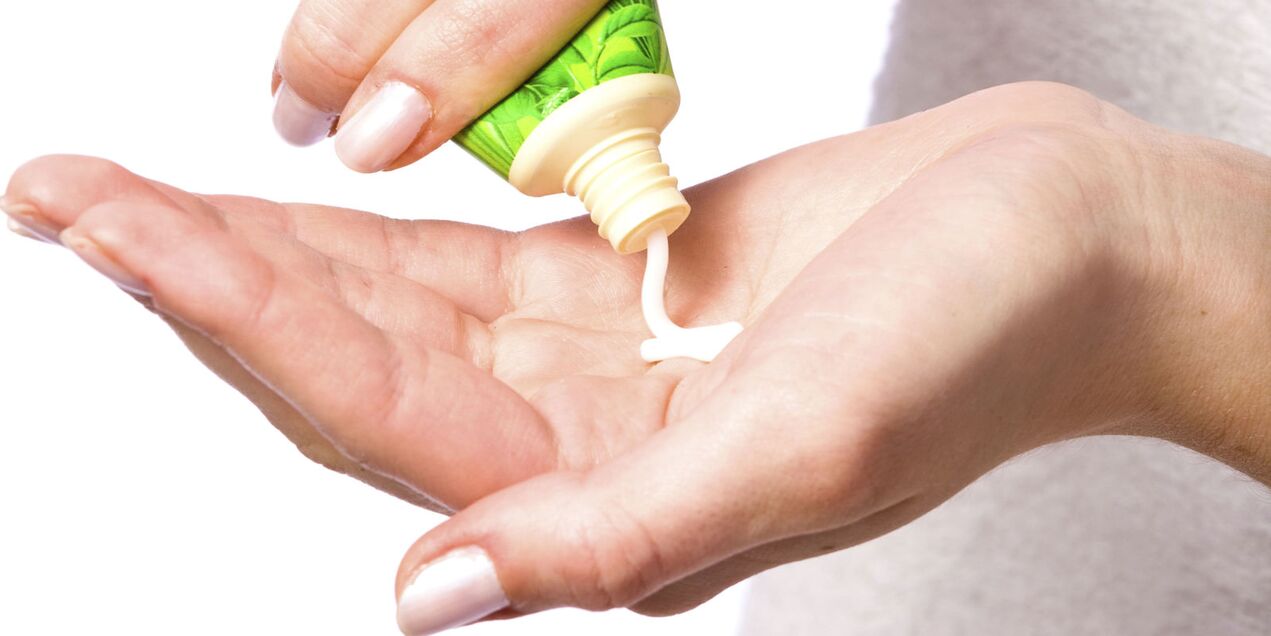
Physiotherapy
If the exact reason why the finger joint hurts is established, the main treatment is supplemented with various physiotherapeutic procedures and balneotherapy methods: electrophoresis, mud application, amplipulse therapy and others.
Physiotherapy improves metabolic processes, normalizes blood circulation in the fingers.
Physiotherapy
Basic therapy should include unloading the joint, however, it is necessary to restore range of motion. To correct motor disorders of the fingers on the hands, gymnastics is carried out using various compressions, pinches, abductions, stretches, which allow you to restore mobility to the joints and sensitivity to the terminal phalanges. Joint pain that occurs in the fingers requires careful introduction of new exercises and a gradual increase in load.
Massage course
Therapeutic massage increases tissue trophism, helping to reduce disease symptoms.However, with pain in the finger joints, there are often contraindications for massage, so the treatment should be carried out only with the permission of the doctor.
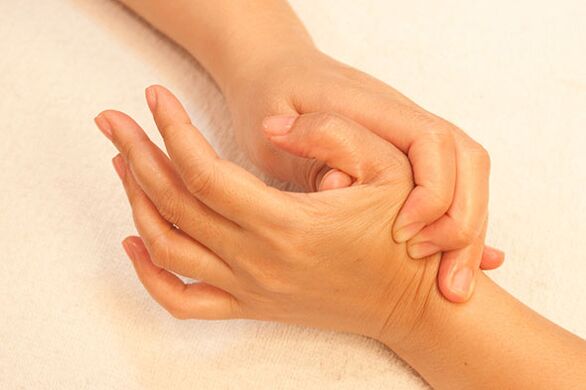
People's recovery
Phytotherapy, compresses, rubs, prepared according to folk recipes, can be useful when there are no contraindications and there is no refusal to treat with drugs. They help to alleviate the situation if the fingers on the hand hurt too much and for a long time.














































